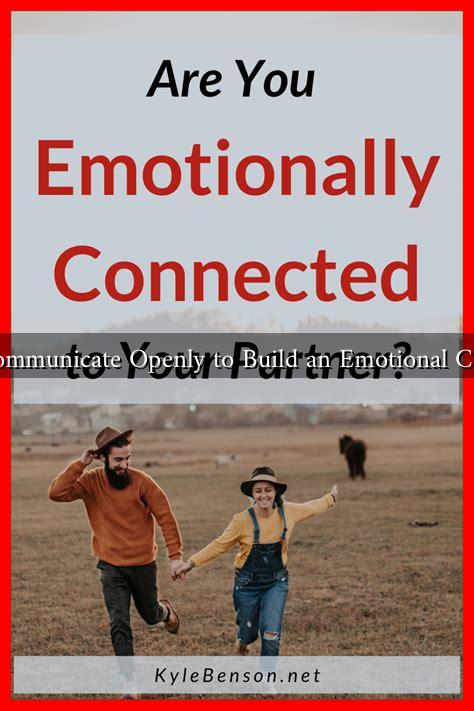-
Table of Contents
- How to Communicate Openly to Build an Emotional Connection
- The Importance of Open Communication
- Key Strategies for Open Communication
- Creating a Safe Environment
- Case Study: The Impact of Open Communication in the Workplace
- Statistics on Emotional Connection
- Conclusion: The Path to Deeper Connections
How to Communicate Openly to Build an Emotional Connection
In today’s fast-paced world, the ability to communicate openly is more crucial than ever. Whether in personal relationships, professional settings, or casual interactions, fostering an emotional connection can lead to deeper understanding, trust, and collaboration. This article explores effective strategies for open communication that can help build emotional connections.
The Importance of Open Communication
Open communication is the foundation of any strong relationship. It allows individuals to express their thoughts, feelings, and needs without fear of judgment. According to a study published in the Journal of Social and Personal Relationships, couples who communicate openly report higher levels of satisfaction and intimacy.
Key Strategies for Open Communication
To foster open communication, consider the following strategies:
- Active Listening: Listening is just as important as speaking. Show genuine interest in what the other person is saying by maintaining eye contact, nodding, and providing verbal affirmations.
- Use “I” Statements: Frame your thoughts using “I” statements to express your feelings without sounding accusatory. For example, say “I feel overwhelmed when…” instead of “You always make me feel overwhelmed.”
- Be Vulnerable: Sharing your own feelings and experiences can encourage others to open up. Vulnerability fosters trust and creates a safe space for emotional expression.
- Ask Open-Ended Questions: Encourage deeper conversations by asking questions that require more than a yes or no answer. For instance, “What do you think about…?” or “How did that make you feel?”
- Practice Empathy: Try to understand the other person’s perspective. Acknowledge their feelings and validate their experiences, even if you don’t necessarily agree with them.
Creating a Safe Environment
For open communication to thrive, it is essential to create a safe environment. Here are some tips to achieve this:
- Choose the Right Time and Place: Find a comfortable setting where both parties can speak freely without distractions.
- Establish Ground Rules: Agree on guidelines for discussions, such as no interrupting and maintaining respect for each other’s viewpoints.
- Be Mindful of Body Language: Non-verbal cues can significantly impact communication. Ensure your body language is open and inviting.
Case Study: The Impact of Open Communication in the Workplace
A study conducted by the Harvard Business Review found that companies with open communication practices saw a 25% increase in employee satisfaction and a 20% increase in productivity. For example, a tech company implemented regular feedback sessions where employees could voice their concerns and suggestions. This initiative not only improved morale but also led to innovative solutions that enhanced the company’s performance.
Statistics on Emotional Connection
Research indicates that emotional connections can significantly impact relationships. According to a survey by the American Psychological Association, 70% of individuals reported that emotional connection is a key factor in maintaining long-term relationships. Furthermore, couples who engage in open communication are 50% more likely to resolve conflicts effectively.
Conclusion: The Path to Deeper Connections
Building an emotional connection through open communication is a vital skill that can enhance both personal and professional relationships. By actively listening, using “I” statements, being vulnerable, asking open-ended questions, and practicing empathy, individuals can create a safe environment for meaningful conversations. The benefits of open communication are clear: increased satisfaction, trust, and collaboration. As you implement these strategies, remember that the journey to deeper connections requires patience and practice. For further reading on effective communication techniques, consider exploring resources from the American Psychological Association.


